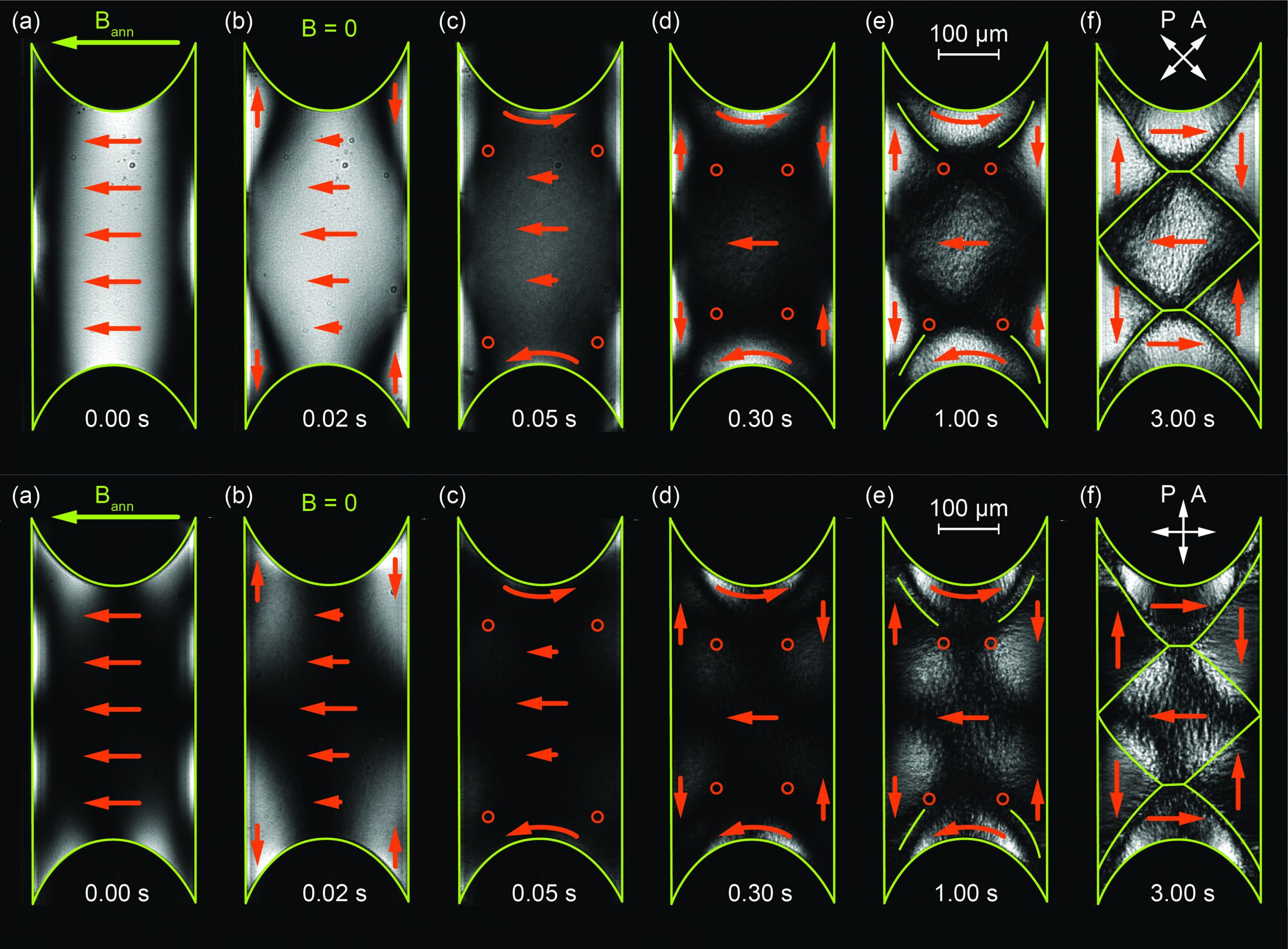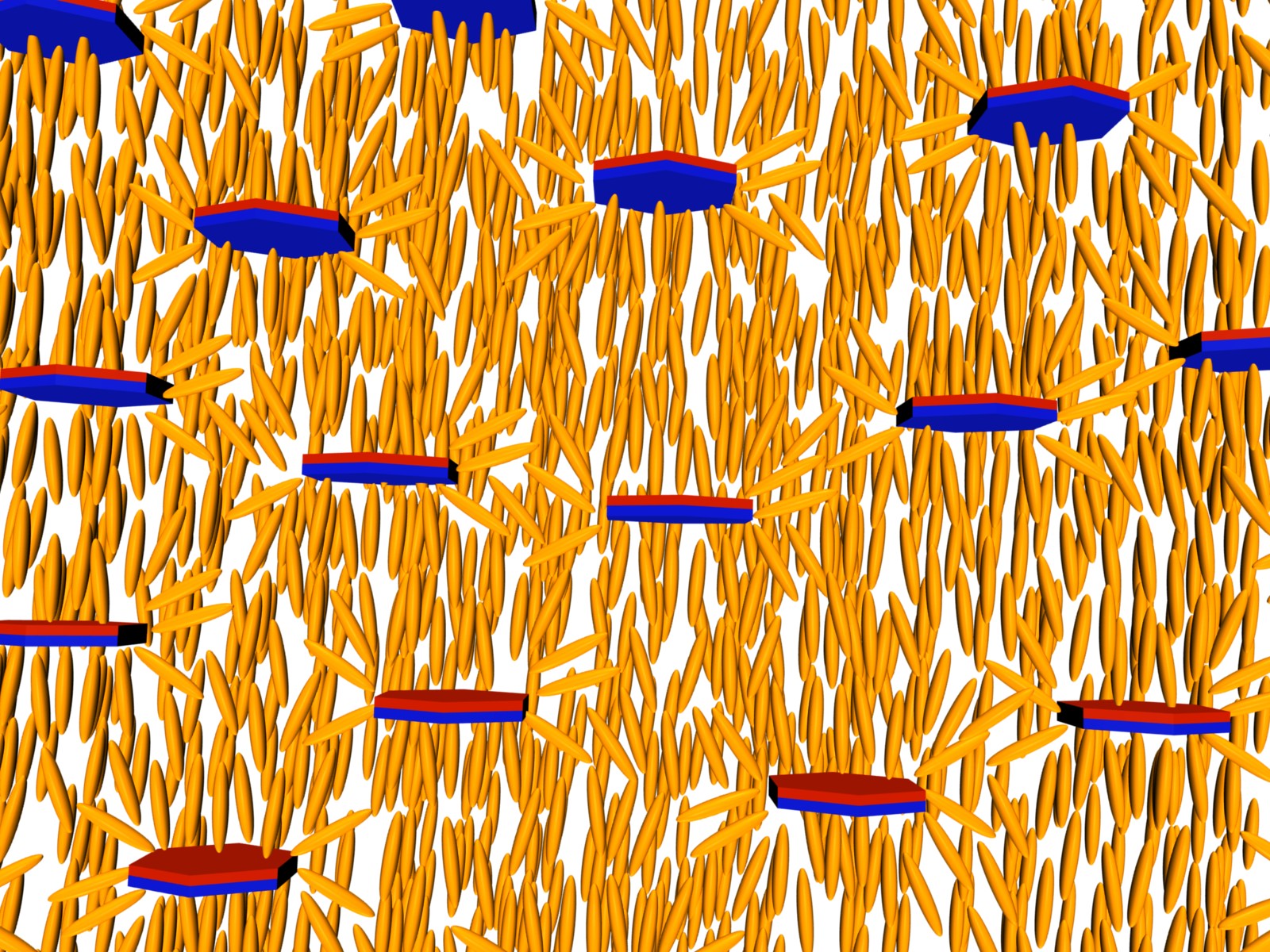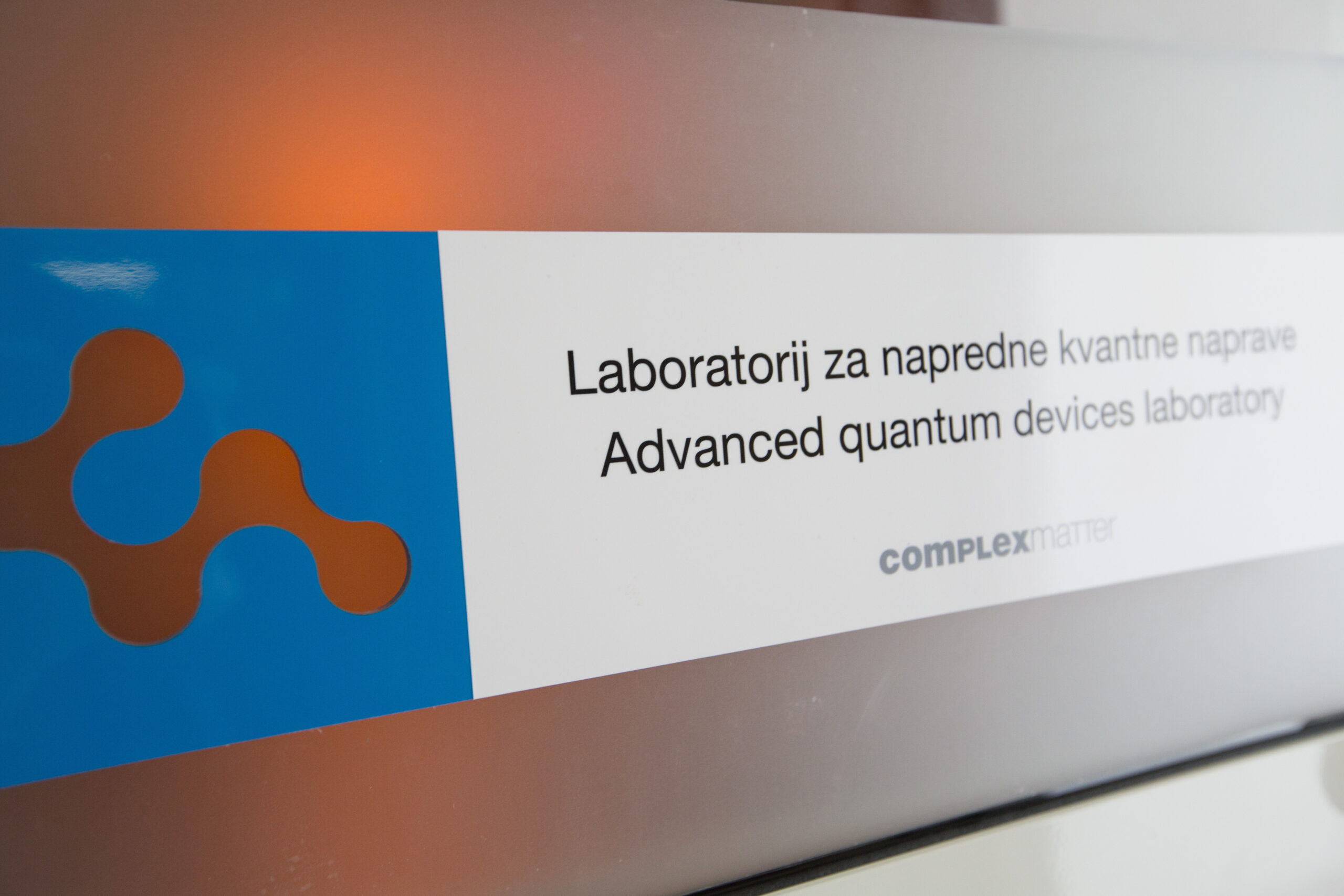Among magnetically responsive soft matter we investigate the physical properties and behavior, as well as the fundamental principles of magnetic actuation of magneto-active elastomers, colloidal suspensions of magnetic particles and ferromagnetic nematic liquid crystals. The generated knowledge is crucial for understanding the capabilities and potential of these materials.
Magneto-Active Elastomers

Magneto-Active Elastomers (MAE) are rubbery materials with mixed-in magnetic particles, which makes them responsive to magnetic fields. Our research is focused on investigation of MAE surfaces, where the presence of a magnetic field can influence properties such as surface reflectivity, adhesion, roughness, wettability, etc. We also study MAEs with patterned surface protrusions (pillars, lamellae …) fabricated by laser micromachining. We demonstrated that light reflection from such surfaces can be controlled by magnetic field with instrumentally limited response time. We investigate magnetically regulated transport of macroscopic objects along such surfaces. We also explore microfluidic assemblies with MAE-based elements for magnetic manipulation of liquid flow.
Straus, I., Kokot, G., Kravanja, G., Hribar, L., Kriegl, R., Shamonin, M., Jezeršek, M. and Drevenšek-Olenik, I., 2023. Dynamically tunable lamellar surface structures from magnetoactive elastomers driven by a uniform magnetic field. Soft Matter, 19(18), pp.3357-3365. (doi: 10.1039/D3SM00012E)
Kriegl, R., Kravanja, G., Hribar, L., Čoga, L., Drevenšek-Olenik, I., Jezeršek, M., Kalin, M. and Shamonin, M., 2022. Microstructured Magnetoactive Elastomers for Switchable Wettability. Polymers, 14(18), p.3883. (doi: 10.3390/polym14183883)
Kravanja, G., Kriegl, R., Hribar, L., Glavan, G., Drevenšek-Olenik, I., Shamonin, M. and Jezeršek, M., 2023. Magnetically Actuated Surface Microstructures for Efficient Transport and Tunable Separation of Droplets and Solids. Advanced Engineering Materials, 25(22), p.2301000. (doi: 10.1002/adem.202301000)
Ferromagnetic Ferrofluids
 It has been shown that barium hexaferrite (BaHF) magnetic nanoplatelets exhibit nematic orientational and ferromagnetic ordering when suspended in an isotropic fluid such as n-butanol. While at low volume fractions isotropic suspensions are obtained, at high enough volume fraction anisotropic interactions promote nematic ordering. By tuning such interactions via optimization of material parameters such as surfactant concentration or nanoparticle magnetization, we reduced the threshold concentration achieving ferromagnetic ordering at 5.3 vol%. We studied reproducible and controllable annealing of ferromagnetic domain structures and analysed the effect of the initial annealing field in the resulting structure. The domains’ spontaneous magnetization was estimated by exploring the effect of an externally applied magnetic field on the fundamental fluctuations of the director field inside the domains.
It has been shown that barium hexaferrite (BaHF) magnetic nanoplatelets exhibit nematic orientational and ferromagnetic ordering when suspended in an isotropic fluid such as n-butanol. While at low volume fractions isotropic suspensions are obtained, at high enough volume fraction anisotropic interactions promote nematic ordering. By tuning such interactions via optimization of material parameters such as surfactant concentration or nanoparticle magnetization, we reduced the threshold concentration achieving ferromagnetic ordering at 5.3 vol%. We studied reproducible and controllable annealing of ferromagnetic domain structures and analysed the effect of the initial annealing field in the resulting structure. The domains’ spontaneous magnetization was estimated by exploring the effect of an externally applied magnetic field on the fundamental fluctuations of the director field inside the domains.
P. Hribar Boštjančič, Ž. Gregorin, N. Sebastián, N. Osterman, D. Lisjak and A. Mertelj, Journal of Molecular Liquids, 2022, 348, 118038. (doi: 10.1016/j.molliq.2021.118038)
Ž. Gregorin, N. Sebastián, N. Osterman, P. Hribar Boštjančič, D. Lisjak and A. Mertelj, Journal of Molecular Liquids, 2022, 366, 120308. (doi: 10.1016/j.molliq.2022.120308)
Ferromagnetic Nematic Liquid Crystals
 We reported for the first time the presence of ferromagnetism in suspensions of magnetic platelets in a nematic liquid crystal, work which was published in Nature. We showed that nanometre-sized ferromagnetic platelets suspended in a nematic liquid crystal can order ferromagnetically on quenching from the isotropic phase. We showed that polydomain or monodomain samples can be produced depending if the quenching is done in the absence or presence of a magnetic field. We also reported magneto-optic and converse magnetoelectric effects in such systems.
We reported for the first time the presence of ferromagnetism in suspensions of magnetic platelets in a nematic liquid crystal, work which was published in Nature. We showed that nanometre-sized ferromagnetic platelets suspended in a nematic liquid crystal can order ferromagnetically on quenching from the isotropic phase. We showed that polydomain or monodomain samples can be produced depending if the quenching is done in the absence or presence of a magnetic field. We also reported magneto-optic and converse magnetoelectric effects in such systems.
A. Mertelj, D. Lisjak, M. Drofenik and M. Copič, Nature, 2013, 504, 237–41. (doi: 10.1038/nature12863)
A. Mertelj, N. Osterman, D. Lisjak and M. Copič, Soft Matter, 2014, 10, 9065–72. (doi: 10.1039/c4sm01625d)
